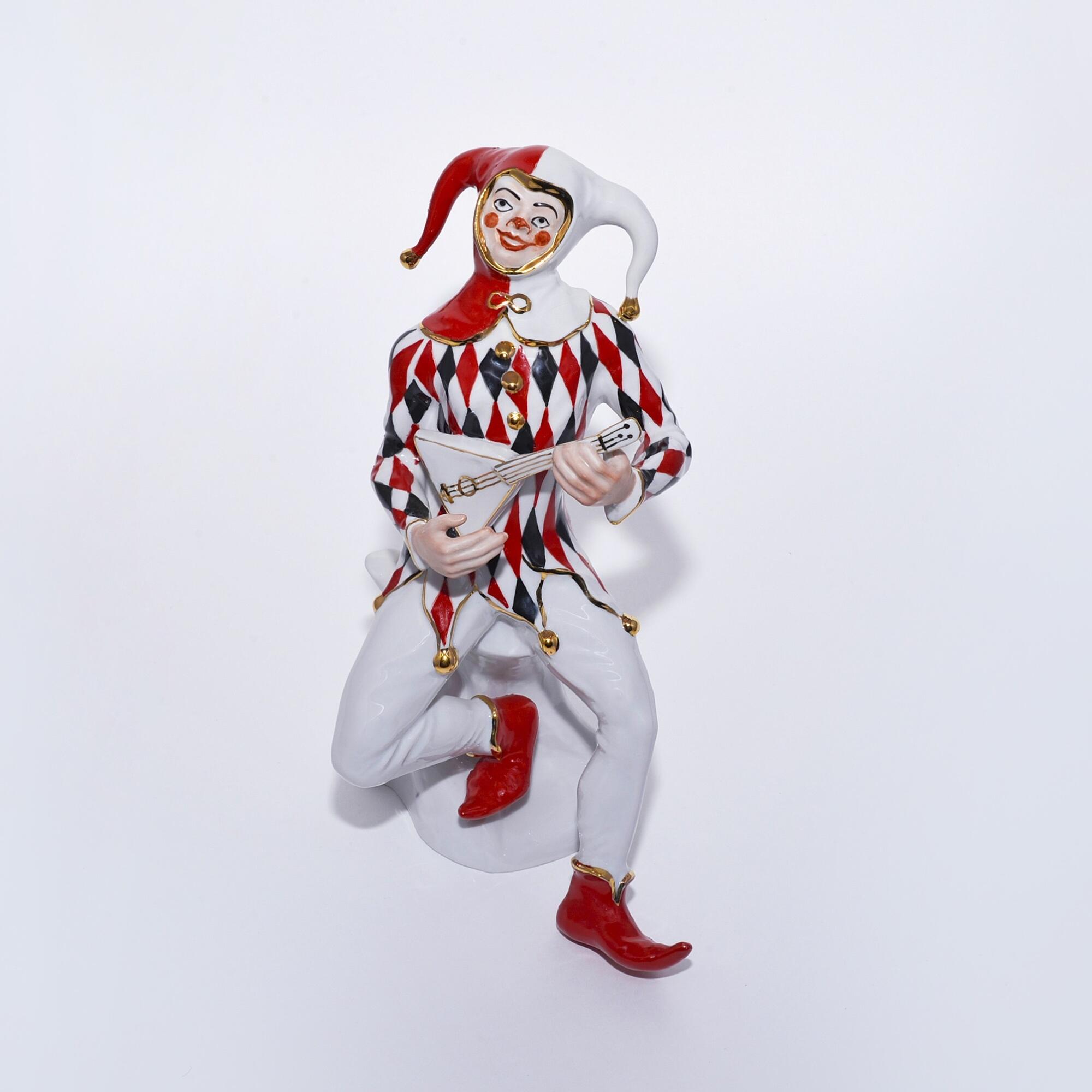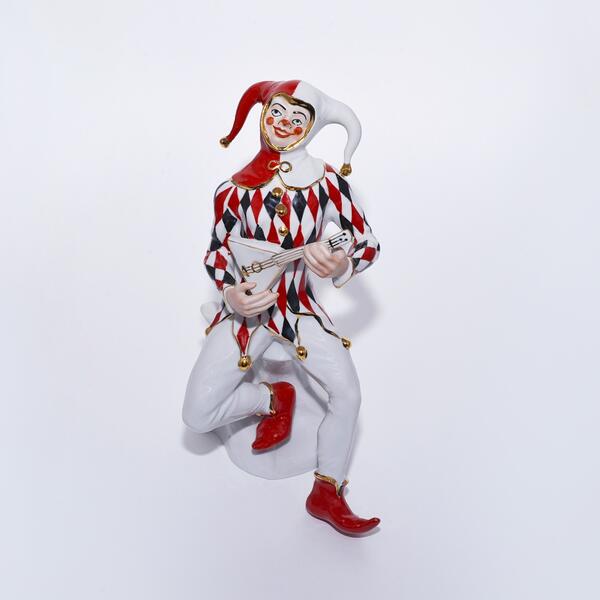The artist Viktor Maksimets chose a jester as a subject for the table sculpture –a person at the royal court or in the manor house, whose profession was to entertain guests.
The artist designed the figure to be in a sitting position as he leans on a white mount. The jester wears a traditional multi-colored suit, which includes a shirt with a red and black diamond-shaped pattern, white trousers, and red-pointed boots. On his head is a cap with the same bells as on the jacket. He holds a balalaika (a Russian traditional musical instrument). The jesters often carried a rattle-stick made of a bull’s bladder and peas. They adorned themselves with dried pea plants — hence the Russian name the “pea buffoon”, which is now used to describe a stupid person.
Jesters appeared in Russia in ancient times. They told fairy tales, stories, or even things that the others were not allowed to say. They entertained both the owners and the guests at Russian manor houses and palaces. Jesters also lived at the court of the tsars, and later the emperors. Some of them went down in history. For example, Ivan Balakirev became famous for his jokes during the reign of Peter I. And Joan d’Acosta received a separate island in the Gulf of Finland and the title of “Samoyed King” from the Emperor for his political and theological jokes.
The concept of “jester” belonged to Medieval Europe, and buffoonery was more widespread in Russia (festive theatrical rituals, in which mummers and musicians participated).
Most of the European royal courts employed buffoons: they played musical instruments, juggled, acted out scenes, and composed riddles for medieval kings. The jesters not only entertained the guests but they had more freedom of speech than others did. Therefore, they often criticized the king and high-ranking officials, and also pictured requests and claims in a comic form. With the beginning of the Age of Enlightenment and the Reformation in the 18th century, jesters were almost never hired anymore.
The artist designed the figure to be in a sitting position as he leans on a white mount. The jester wears a traditional multi-colored suit, which includes a shirt with a red and black diamond-shaped pattern, white trousers, and red-pointed boots. On his head is a cap with the same bells as on the jacket. He holds a balalaika (a Russian traditional musical instrument). The jesters often carried a rattle-stick made of a bull’s bladder and peas. They adorned themselves with dried pea plants — hence the Russian name the “pea buffoon”, which is now used to describe a stupid person.
Jesters appeared in Russia in ancient times. They told fairy tales, stories, or even things that the others were not allowed to say. They entertained both the owners and the guests at Russian manor houses and palaces. Jesters also lived at the court of the tsars, and later the emperors. Some of them went down in history. For example, Ivan Balakirev became famous for his jokes during the reign of Peter I. And Joan d’Acosta received a separate island in the Gulf of Finland and the title of “Samoyed King” from the Emperor for his political and theological jokes.
The concept of “jester” belonged to Medieval Europe, and buffoonery was more widespread in Russia (festive theatrical rituals, in which mummers and musicians participated).
Most of the European royal courts employed buffoons: they played musical instruments, juggled, acted out scenes, and composed riddles for medieval kings. The jesters not only entertained the guests but they had more freedom of speech than others did. Therefore, they often criticized the king and high-ranking officials, and also pictured requests and claims in a comic form. With the beginning of the Age of Enlightenment and the Reformation in the 18th century, jesters were almost never hired anymore.



